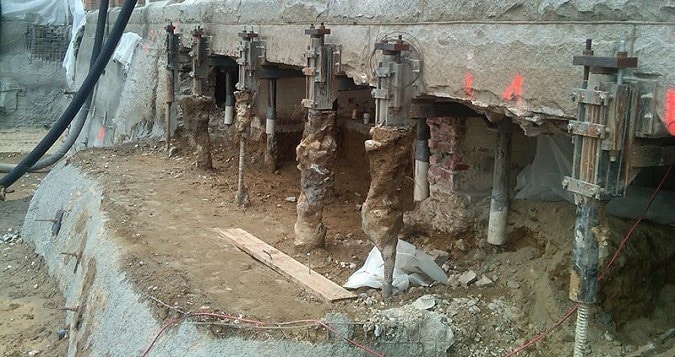Your home is probably one of the biggest investments you will ever make. It is where you feel protected and safe, and where you create memories with your family. But what happens when that sense of security is threatened by a foundation that’s damaged or unstable? The foundation is the most important part of your home’s structure, and any issues with it can have disastrous consequences. That’s where underpinning comes in – a solution that is both effective and long-lasting. In this article, we’ll explain what underpinning is, how it works, and why it’s crucial for keeping your home structurally sound.
What is Underpinning and how does it work?
underpinning is a structural process that involves strengthening or stabilizing your home’s foundation. The goal is to minimize the risk of further damage by adding support and reinforcing the existing structure. There are several techniques that can be used for underpinning, depending on the type of foundation and the extent of the damage. One popular method is piling, where steel or concrete pillars are inserted underneath the foundation to provide additional support. Another common technique is injecting grout or resin into the soil beneath the foundation to increase its load-bearing capacity.
Why is Underpinning important for structural Stability?
If you notice any signs of foundation damage, such as cracks in the walls, doors and windows that don’t close properly, or uneven floors, it’s essential to take action as soon as possible. Ignoring these issues can lead to further structural damage, which can compromise the safety and stability of your home. Underpinning can address any existing damage, as well as prevent future issues from arising. With a strong foundation, your home will be more resilient to natural disasters and environmental factors that can cause damage over time.
Benefits of Underpinning for your home?
Underpinning offers numerous benefits that make it a valuable investment for any homeowner. Firstly, it can increase the value of your property, ensuring a higher return on your investment if you decide to sell. Secondly, underpinning can save you money in the long run by minimizing the need for costly repairs and maintenance. Additionally, by solving foundational issues, underpinning can prevent potential headaches with insurance claims and property damage disputes.
How to know if your home requires Underpinning?
There are a few signs that indicate your home may require underpinning. The most obvious clue is visible foundation damage, such as cracks or flaking concrete. Other signs include doors and windows that stick or won’t close properly, uneven floors, and gaps between walls and ceilings. If you notice any of these issues, it’s important to consult with a foundation specialist as soon as possible. They will be able to assess the extent of the damage and recommend the best course of action, which may include underpinning.
In short:
Your home is your sanctuary, and it deserves a solid foundation that is strong, stable, and secure. Even if you don’t notice any obvious signs of foundation damage, it’s always a good idea to have regular inspections to ensure everything is in proper working order. If you do happen to identify issues, don’t wait to take action. With underpinning, you can protect your investment and enjoy peace of mind knowing your home is structurally sound.
